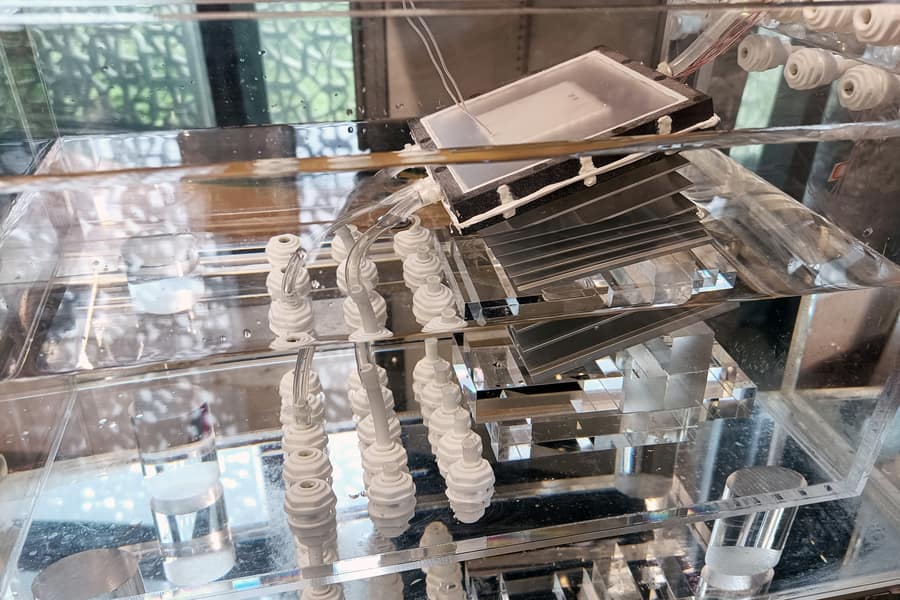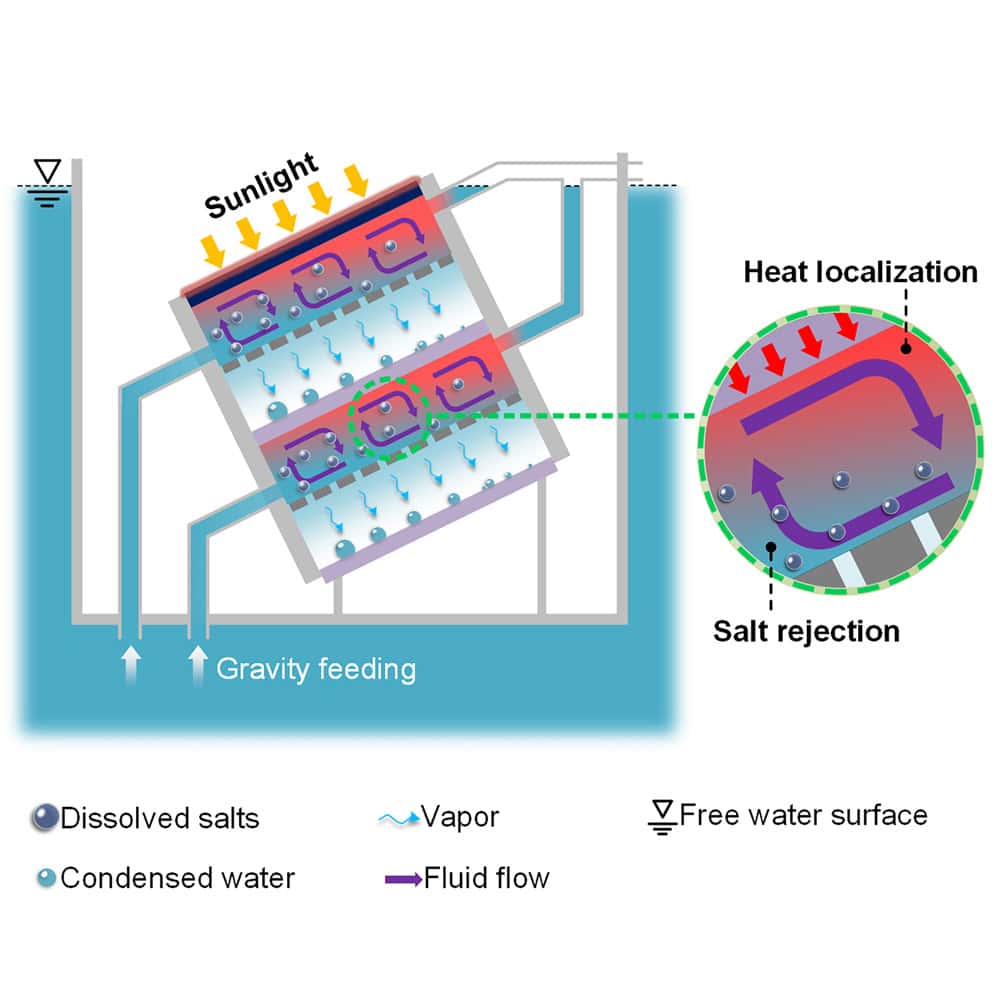A team of researchers from MIT and Shanghai Jiao Tong University has developed a solar-powered desalination device that is resistant to salt clogging and is capable of converting seawater into fresh drinking water.

There are over 21,000 desalination plants operating in different parts of the world. These plants are of great importance as they enable many arid countries to meet their drinking water needs.
The majority of such facilities exist in Middle-Eastern countries, and you’d be surprised to know that in Kuwait, a staggering 90% of its drinking water supply is derived from desalination plants, followed closely by Oman at 86%, Saudi Arabia at 70%, and the United Arab Emirates at 42%.
The Claude “Bud” Lewis Carlsbad plant, which is the largest desalination plant in the US, provides fresh water to over three million people. Globally, more than 300 million people currently rely on desalination plants for drinking water.
However, many of these plants face two big challenges; one is excessive salt clogging and the other is high energy consumption which leads to high operational costs. The MIT team claims that their design can overcome both of these challenges. In fact, it has the potential to produce clean water at costs lower than what people pay for tap water in the US.
“For the first time, it is possible for drinking water produced by sunlight to be cheaper than tap water. This opens up the possibility for solar desalination to address real-world problems,” said Yang Zhong, one of the study authors and a researcher at MIT’s Device Research Laboratory.
The salt-clogging problem in desalination
Existing solar-powered desalination systems generally comprise two units: a condenser and an evaporator. Using the latter, the incoming salty water is first heated so that it starts to evaporate, as a result, the salt particles are isolated. Meanwhile, the salt-free water vapor reaches the condenser where it is returned to a liquid form.
Since such systems continuously accumulate salt crystals, their performance reduces with time and they require regular maintenance otherwise, they get blocked. Such frequent maintenance in large plants also increases their running cost.
“Significant performance degradation due to salt accumulation has posed a challenge to both the long-term reliability of solar desalination and the efficient treatment of hypersaline discharge,” the researchers note.
Thermohaline convection is the key to efficient desalination
To overcome this problem, the researchers employed a technique inspired by thermohaline convection, a natural phenomenon that drives ocean currents. It is the movement of ocean water caused by differences in temperature and salinity.
What happens in thermohaline convection is that cooler, saltier water sinks (because of higher density), while warmer and less salty water rises to the surface, creating a continuous circulation pattern in the ocean. This circulation helps distribute heat and salt around the world’s oceans and also affects the Earth’s climate.
Unlike existing systems, the proposed multi-stage desalination device doesn’t let salt crystals accumulate by creating a water current within.

One of the sections of the device is a tilted box-like structure that absorbs sunlight and heats up the ceiling of the box which acts as an evaporator. Saltwater entering from the topside of the box starts evaporating. The resulting water vapor passes to the next stage via the bottom part of the box.
What’s interesting is that the tilted box is situated inside a larger empty vessel-like structure that floats in the saltwater resulting from evaporation. A tube connects the top part of the box to the bottom of the container.
With this setup, as saltwater volume increases it naturally goes up through the tube into the box. Because the box is tilted and the sun heats it up, the water inside starts to swirl around as it moves through. The swirling motions help the water to touch the top part of the box where it evaporates. At the same time, it prevents the salt from settling and causing blockages.
The remaining salt keeps moving within the device and is eventually expelled. Meanwhile, water vapors are condensed and collected as clean drinking water.
This desalination device has huge potential
The study authors conducted several tests using different prototypes. They claim that in terms of water production rate and salt rejection capacity, their device outperforms all other passive solar desalination systems that are currently in testing.
The current prototype is small but they suggest that a suitcase-sized version of their multi-stage desalination device can produce four to six liters of clean drinking water per hour only using seawater and sunlight.
They believe that, at that scale, it won’t require any anti-clogging maintenance tasks and will last many, many years. Also, since no electricity or additional energy source is required, it is capable of generating clean water out of seawater at a price lower than tap water in the US.
However, whether or not the same technique can work for large desalination plants is yet to be tested.
“With high freshwater production and extreme salt endurance, our device significantly reduces the water production cost, paving a pathway toward the practical adoption of passive solar desalination for a sustainable water economy,” the researchers said.
Hopefully, this technology will increase access to clean drinking water in the future and reduce the carbon footprint of large desalination plants that consume a lot of power.
The study has been published in the journal Joule.


